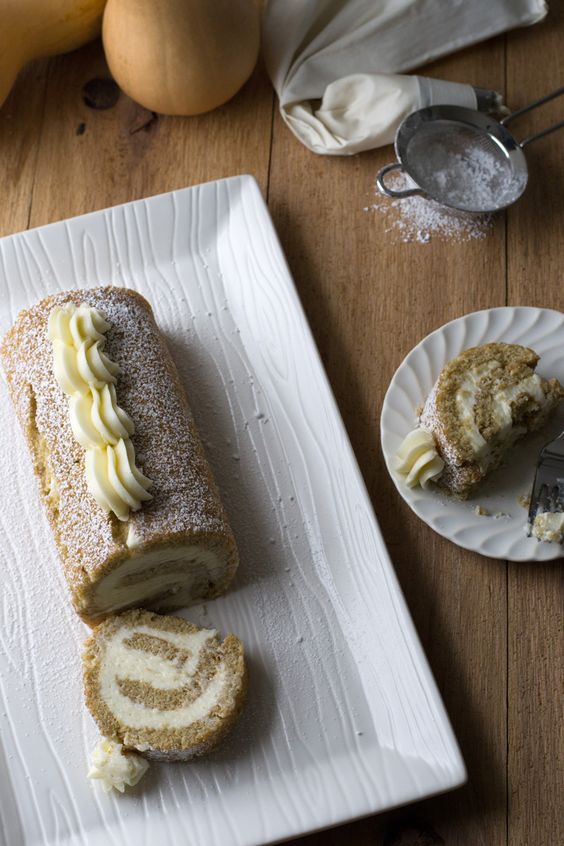
I am going to preface this entire post with a disclaimer that I suck at rolling cakes. This is the first time I have ever made a roulade cake, and by “first time” I actually mean “third time,” because that’s how many times I made this recipe before it didn’t look like it had been in a grizzly traffic accident.
I tried a few different “tips” from the internet and from my mom. I tried baking the cake on greased parchment paper and without any parchment, rolling the cake up while hot in a towel dusted with confectioners’ sugar, in a damp towel, and in the parchment paper. Surprisingly, parchment paper was my worst enemy here. In the end, the cake came out best when I brushed the pan with my Cake Magic mixture. I am not really a fan of pre-rolling the cake, although the damp towel method worked best for me, in terms of the cake actually unrolling and not sticking.
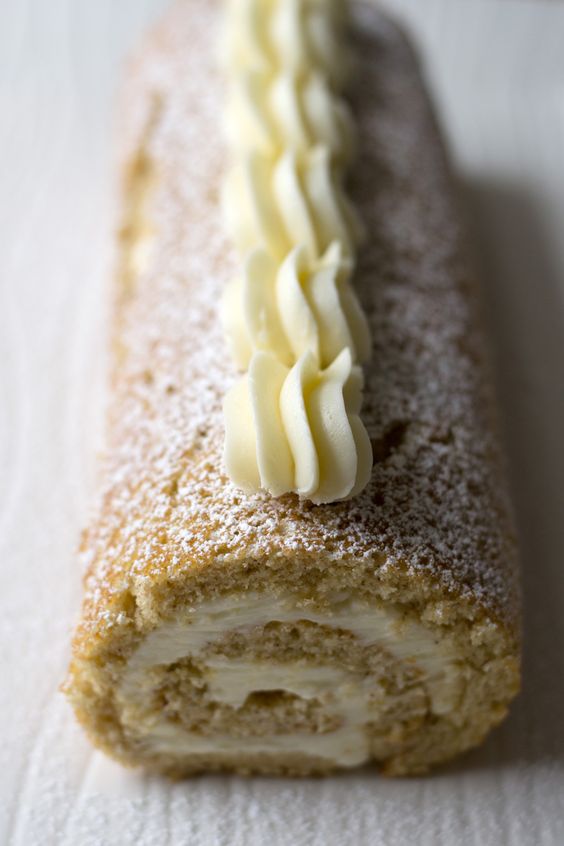
During my third and final attempt, I texted my friend Megan to see if she could shed any light. Megan is kind of a comfort food expert, so I figured she may have made a pumpkin roll before. No such luck, though, because according to Megan, she doesn’t “understand the concept of rolling a cake without it breaking.” She also imparted me with such gems as, “Idk how the damn Amish do it,” and, “It’s against science to roll cake. The only things that get rolled are toilet paper and doobies.”
Did she just say doobies? Who says doobies? Megan, apparently. Also, girlfriend is obsessed with the Amish. We once went on a romantic starlight buggy ride for her birthday. So that happened.
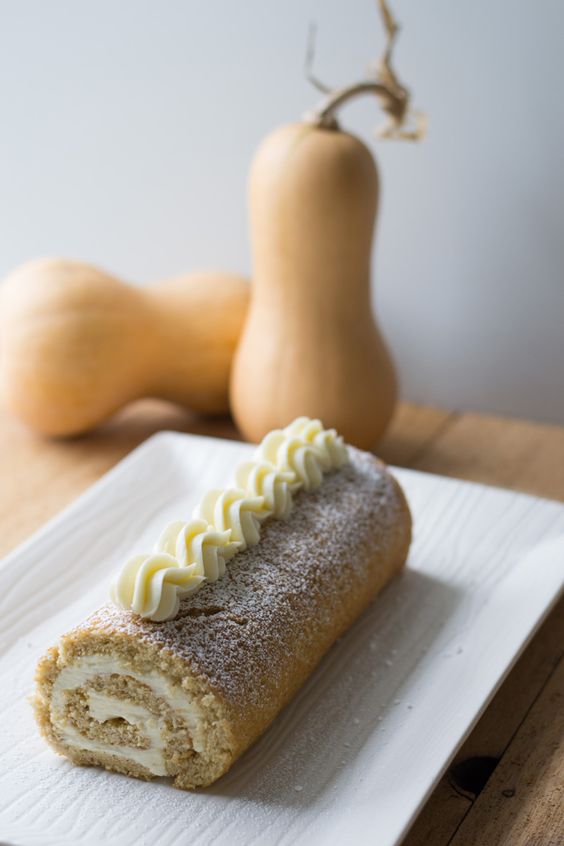
Long story short, if you have a tried and true method of rolling pumpkin roll, use it. Because I have nothing to add to the bounty of knowledge that is out there. Except maybe this: if there are cracks in your cake, don’t fret. Just dust the whole thing with confectioners’ sugar, maybe add a little decorative frosting to the top to disguise anything major, and call it a day.
But anyway, I have so far glossed over the fact that this is not a pumpkin roll. It is a butternut squash roll. And nothing goes better with butternut squash than sage. Sure, those things are mostly used in savory applications (like this kickass risotto recipe from Love & Olive Oil I just made a couple weeks ago). But why not use them in dessert?
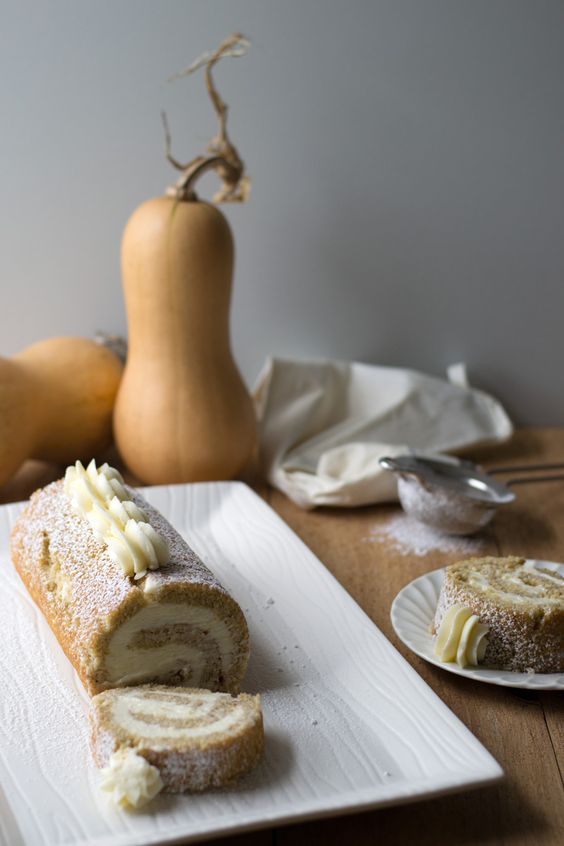
Milk is great for herbal infusions, so I opted for ermine frosting (aka boiled milk frosting) instead of cream cheese. The last time I tried a milk & flour-based frosting, things ended badly. But that was 5 years ago, before I realized that you really need to let things cool or else the butter in the buttercream will melt and you will be sad. So young, so naive. Since ermine frosting was endorsed by my friend Tux over at Brooklyn Homemaker, I decided to give it another shot.
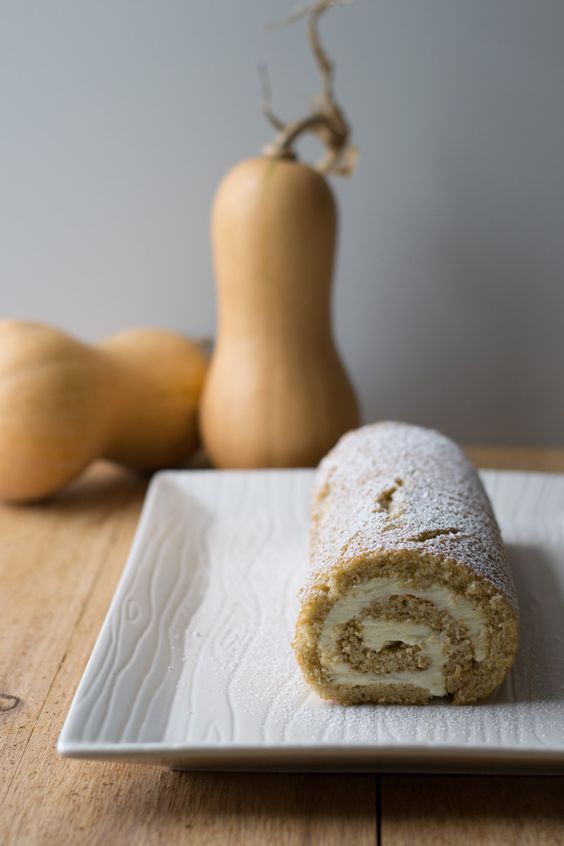
Perfection! Why is this frosting not more popular? It has a great texture, but there is no egg-separating like with Swiss & Italian meringue buttercreams. It was even approved by my husband, who is not a big frosting guy. He loved this recipe in general, and kept going back for second seconds. And while I bake what I like, it’s always good to get his stamp of approval. (He recently told me he would divorce me if I ever make homemade caramels, so naturally, I want to do it sooo bad now.) So if you’re up for something a little different this Thanksgiving, give this cake roll a go!

BUTTERNUT SQUASH CAKE ROLL WITH SAGE FROSTING
- 1 small butternut squash
- Cake Magic
- ¾ cup (90 grams) all-purpose flour
- ½ teaspoon baking powder
- ½ teaspoon baking soda
- ½ teaspoon freshly ground nutmeg
- ¼ teaspoon ground cinnamon
- ¼ teaspoon ground allspice
- ¼ teaspoon salt
- 3 large eggs, at room temperature
- 1 cup (200 grams) granulated sugar
- 1 cup (240 mL) whole milk
- ¼ cup all-purpose flour
- 8 fresh sage leaves
- 1 cup (225 grams) unsalted butter, at room temperature
- ¾ cup (150 grams) granulated sugar
- ⅛ teaspoon salt
- 1 teaspoon vanilla extract
- 1-2 tablespoons confectioners’ sugar (optional)
- Carefully slice butternut squash in half and place on a plate. Microwave for 15-20 minutes, until squash is fork-tender. Allow to cool. Scoop out the flesh of the squash and place into the bowl of a food processor. Process until smooth. Measure out ⅔ cup (150 grams) of squash puree; reserve the rest for another use (like this amazing risotto).
- Preheat oven to 375°. Brush a 15×10-inch jelly roll pan with Cake Magic. (Alternatively, grease and flour the pan.)
- In a medium mixing bowl, whisk together flour, baking powder, baking soda, spices, and salt.
- In the bowl of a stand mixer fitted with the whisk attachment, beat eggs and sugar on high speed until thick and light in color, about 5 minutes. Add squash puree and beat until combined. With the mixer on low, add the dry ingredients, and beat until just combined. Scrape down the sides and bottom of the bowl with a rubber spatula and stir a couple times by hand to make sure that all the ingredients are evenly distributed.
- Spread cake batter into prepared jelly roll pan, using an offset spatula to distribute it evenly in the pan. Bang the pan sharply on the counter once, then jiggle it a little to make sure the batter is even. Bake for 13-15 minutes, until cake is lightly browned and springs back when you touch the top with your finger. Cool in pan on a wire rack.
- In a medium saucepan, whisk together milk and flour until smooth. Gently crumple sage leaves your hands to release the oils, then place in the saucepan with the milk. Bring to a simmer over medium heat, whisking constantly, until the mixture becomes thick and bubbles start to blip to the surface. Remove from heat, transfer mixture to a bowl, and press plastic wrap against the top. Allow to cool completely.
- When cool, remove and discard sage leaves (resist the urge to lick the thick milk goo off your fingers. It does not taste good right now.)
- In the bowl of a stand mixer fitted with the paddle attachment, cream butter, sugar, and salt on high speed until light and fluffy, 3-5 minutes. Add vanilla and beat for about another minute. Add thick milk mixture and beat on high for 5-7 minutes, until the frosting is very smooth and fluffy and has increased in volume.*
- Spread ¾ of the frosting onto cooled cake, leaving a ½-inch border unfrosted. Starting with a short end, gently roll the cake up, ending with the seam on the bottom of the cake. Use a serrated knife to cut off each end of the roll, revealing the spiral inside. If desired, dust the top with confectioners’ sugar, and pipe remaining frosting on the top. Slice and serve immediately, or keep chilled if not serving right away.
- *If you want, you can make the frosting ahead of time. Refrigerate it for up to 2 days. When ready to use, bring the frosting to room temperature, then beat it in your mixer until smooth and fluffy. (It will look curdled and watery at first, but if you beat it long enough, it WILL come back together!)



























